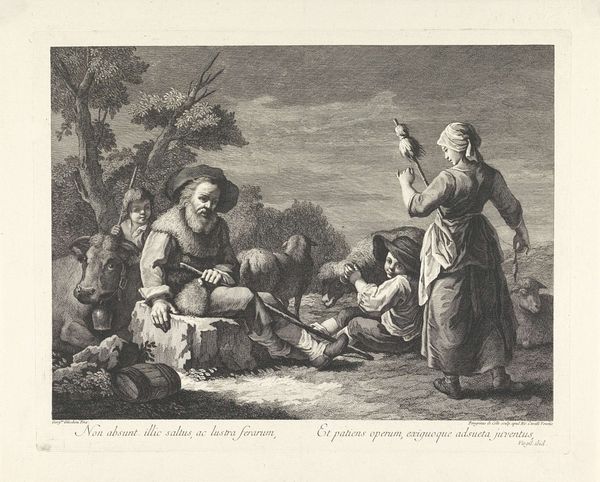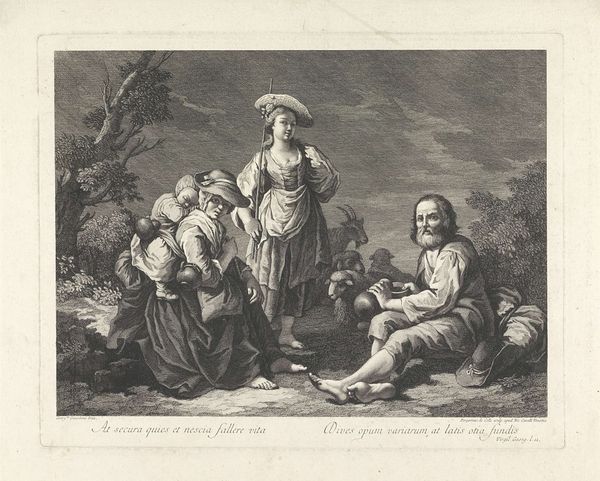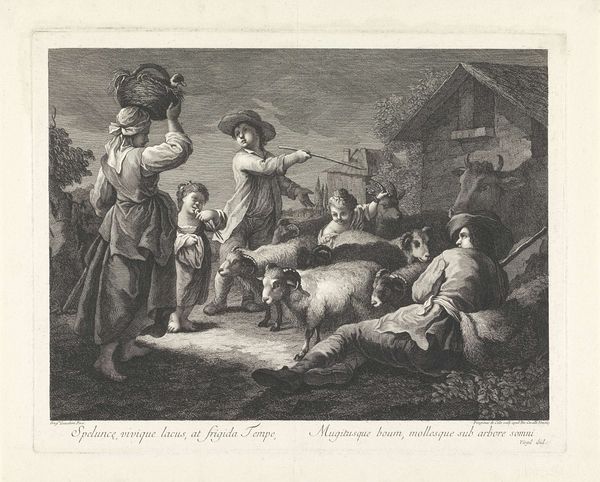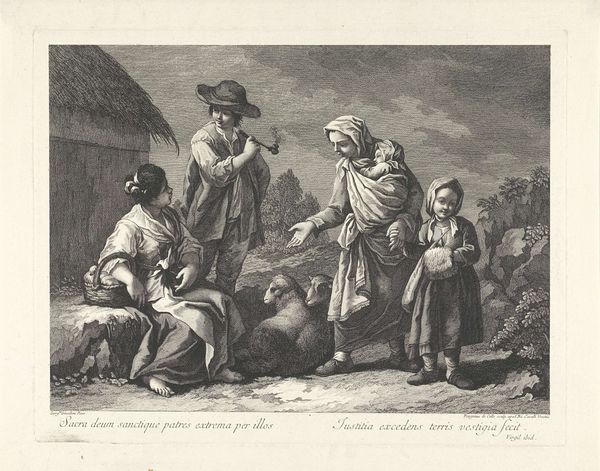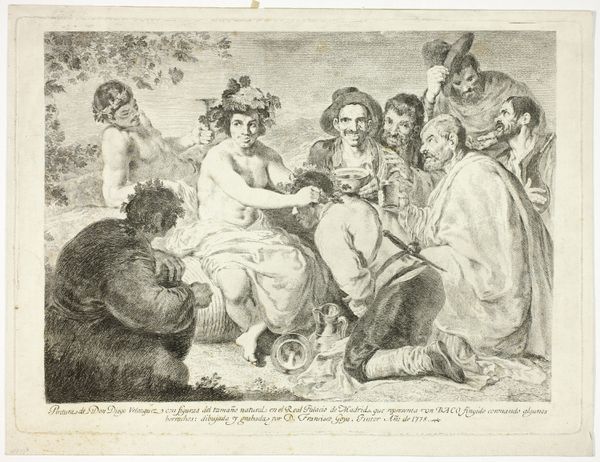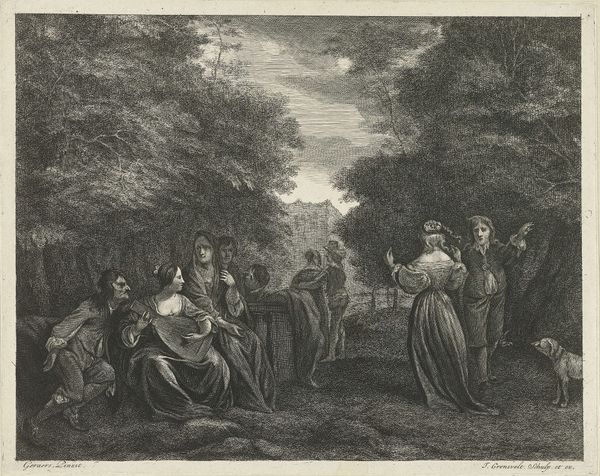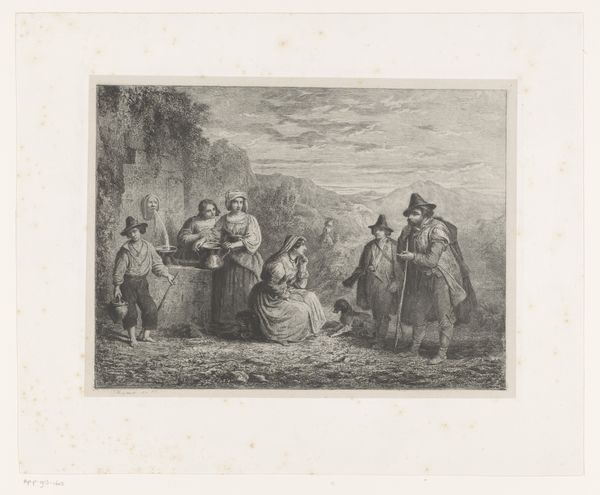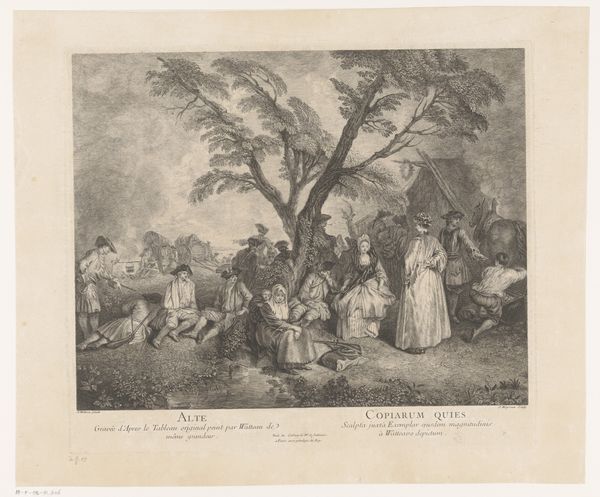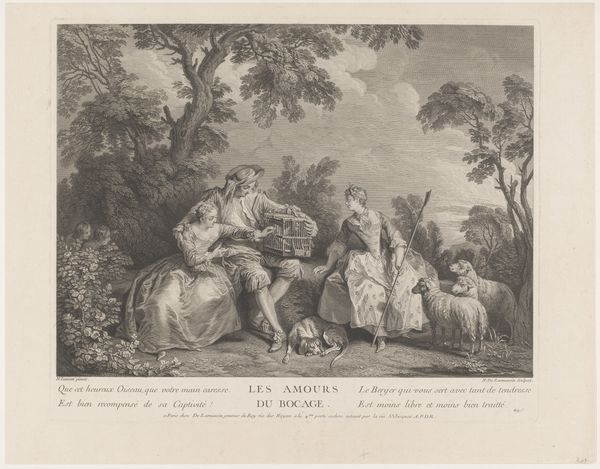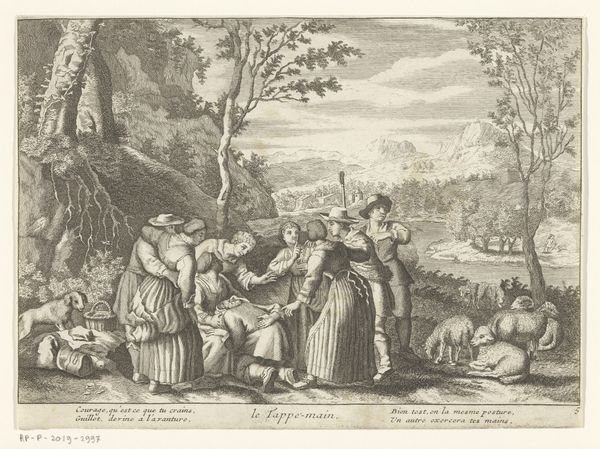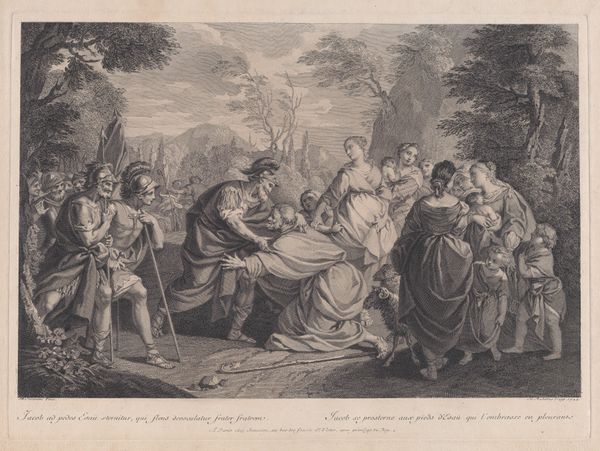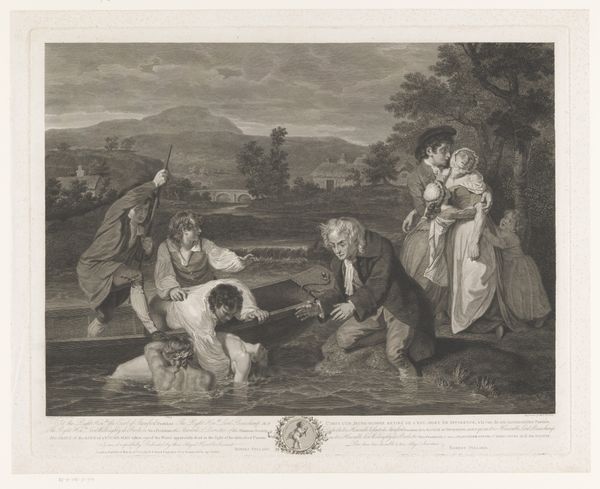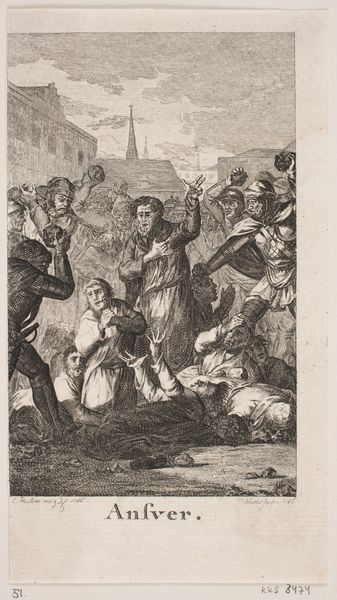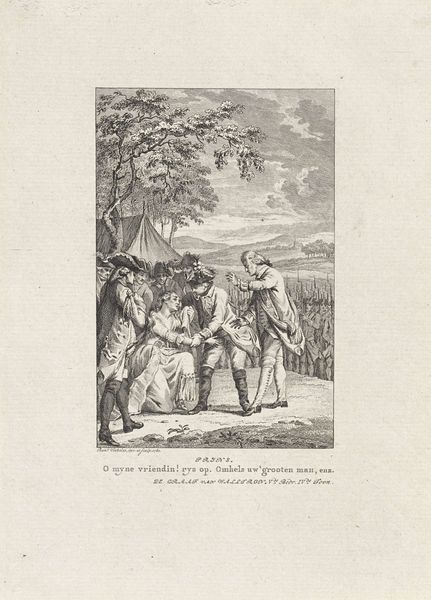
Dimensions: height 338 mm, width 428 mm
Copyright: Rijks Museum: Open Domain
Pellegrino dal Colle made this etching of a herder family in a landscape in the late 18th century. An etching is made by drawing into a prepared wax ground on a metal plate, which is then exposed to acid. The acid bites away the exposed lines, leaving an image that can be inked and printed. The material quality of the print gives the image its character, with the density of lines creating areas of shadow and depth. Notice the way the etched lines vary in thickness and direction to define the figures and landscape. This was skilled labor. Printmaking at this time was closely aligned to industrial production, churning out images for mass consumption. Dal Colle was no doubt aware of the irony of the process: it was a mode of production that could represent any subject matter, even images of pastoral simplicity. It reminds us that even seemingly simple representations of rural life are shaped by the social and economic forces of their time.
Comments
No comments
Be the first to comment and join the conversation on the ultimate creative platform.
